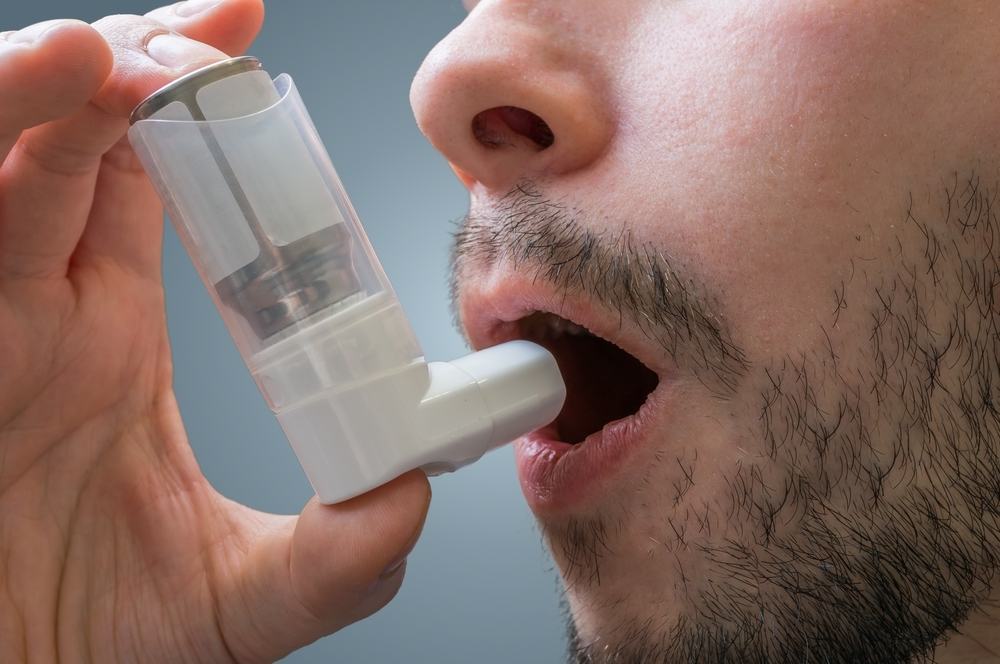Contents:
- Medical Video: How to use a peak flow meter
- What is a peak expiratory flow rate?
- Why do we have to test the peak expiratory flow rate?
- How to test the peak expiratory flow rate?
- How often do I have to do this test?
- What preparation is needed to test the peak expiratory flow rate?
- What is the normal result of a peak expiratory flow rate test?
- What do you mean by the abnormal results of the peak expiratory flow rate?
- What are the risks associated with a peak expiratory flow rate?
Medical Video: How to use a peak flow meter
What is a peak expiratory flow rate?
Peak Expiratory Flow Rate (PEFR) aka the peak respiratory rate is a test that measures how quickly a person can exhale. This test checks lung function, and is often used by patients who have asthma.
Asthma is a chronic condition characterized by inflammation in the respiratory tract. Common symptoms of asthma include worsening breathlessness accompanied by activity, wheezing, and cough. Exhaled air flow from the lungs can be restricted due to inflammation or blockage due to excess mucus.
The PEFR test is usually done at home with a cheap handheld device called a peak flow monitor. Both electric and non-electric devices are available for purchase. This device is easy to use, and most patients over the age of five can read the results accurately.
In order for the PEFR test to be beneficial, the patient must keep a continuous record of the flow rate. If not, the patient will not see a pattern that occurs when the flow rate is low or declining.
These patterns can help individuals prevent symptoms from worsening before a full asthma attack occurs, for example. Each person will know when they need to adjust their environment or treatment, or make an appointment with a doctor. The PEFR test is also called peak flow.
Why do we have to test the peak expiratory flow rate?
The PEFR test is a general, simple test that helps to diagnose and monitor lung problems, such as:
- asthma
- chronic obstructive pulmonary disease (COPD)
- lung transplants that don't work properly
This test can also be done at home to determine whether treatment of lung disorders works and to prevent the condition from worsening. Keeping records continuously from peak flow rates can also help patients determine whether certain environmental factors or pollutants affect them breathing.
How to test the peak expiratory flow rate?
The PEFR test is performed by monitoring the peak expiratory flow. This is a simple handheld device with a funnel at one end and a scale on the other. A small plastic arrow moves when air is blown into the funnel, measuring the speed of air flow.
When you do a test, you will:
- Breathe as deep as you can
- Blow into the funnel as fast and as hard as you can. Don't put your tongue in front of the funnel
- Do this three times
- Note the highest speed of three
If you cough or sneeze while exhaling, you need to repeat it again.
How often do I have to do this test?
To determine "the best thing," patients must measure their peak flow rate:
- at least twice a day for two to three weeks
- in the morning, when you wake up, and in the afternoon or evening
- 15 to 20 minutes after using inhalation, quick-acting beta2-agonist (asthma medicine)
Beta2-agonist medicine general is albuterol, with the brand names Proventil and Ventolin. This drug will relax the muscles that surround the airways and help increase breathing caliber.
What preparation is needed to test the peak expiratory flow rate?
PEFR is a simple test that does not require much preparation. You might not want to wear tight clothing that might prevent you from breathing deeply. Stand or sit up, and focus.
What is the normal result of a peak expiratory flow rate test?
Normal test results vary depending on your age, gender, and height. Results are more useful when compared to your current range in the past.
You can check your results by comparing them to this ratio provided by Monash University. This ratio shows the peak level of the normal flow associated with height (MU):
Height (cm) = PEFR (L / min)
- 120 cm = 215 L / min
- 130 cm = 260 L / min
- 140 cm = 300 L / min
- 150 cm = 350 L / min
- 160 cm = 400 L / min
- 170 cm = 450 L / min
- 180 cm = 500 L / min
Small changes may not mean anything significant. If you see a significant decrease in the speed of your peak flow, it may be caused by a recurrence of your lung disease. This is especially possible if other symptoms occur, such as:
- cough worsens
- hard to breathe
- sigh or hoarse breath
If you are concerned about the results, you might want to visit a doctor and get a more accurate reading with a spirometer. Spirometer is a more advanced peak flow monitoring device. For this test, you will breathe through a funnel connected to a spirometer machine that measures your breathing rate.
What do you mean by the abnormal results of the peak expiratory flow rate?
The flow rate decreases when the airways are blocked. Asthma patients can experience low peak levels before they develop respiratory symptoms.
If you have asthma and have a peak flow rate of less than 80 percent of your best amount, you should use your emergency inhaler medication. If your peak flow rate is less than 50 percent of your best amount, you should use the beta2-agonist drug and seek immediate medical attention.
If one of the following symptoms occurs, check with the emergency room immediately. This is a symptom of a medical emergency. This decrease in alertness includes severe drowsiness or confusion
- extreme difficulty breathing
- bluish color on the face and / or lips
- severe anxiety or panic caused by an inability to breathe
- sweating
- fast pulse
What are the risks associated with a peak expiratory flow rate?
PEFR is a safe test. There are no risks associated with this test. In rare cases, you may feel a little dizzy after breathing into the machine several times.












